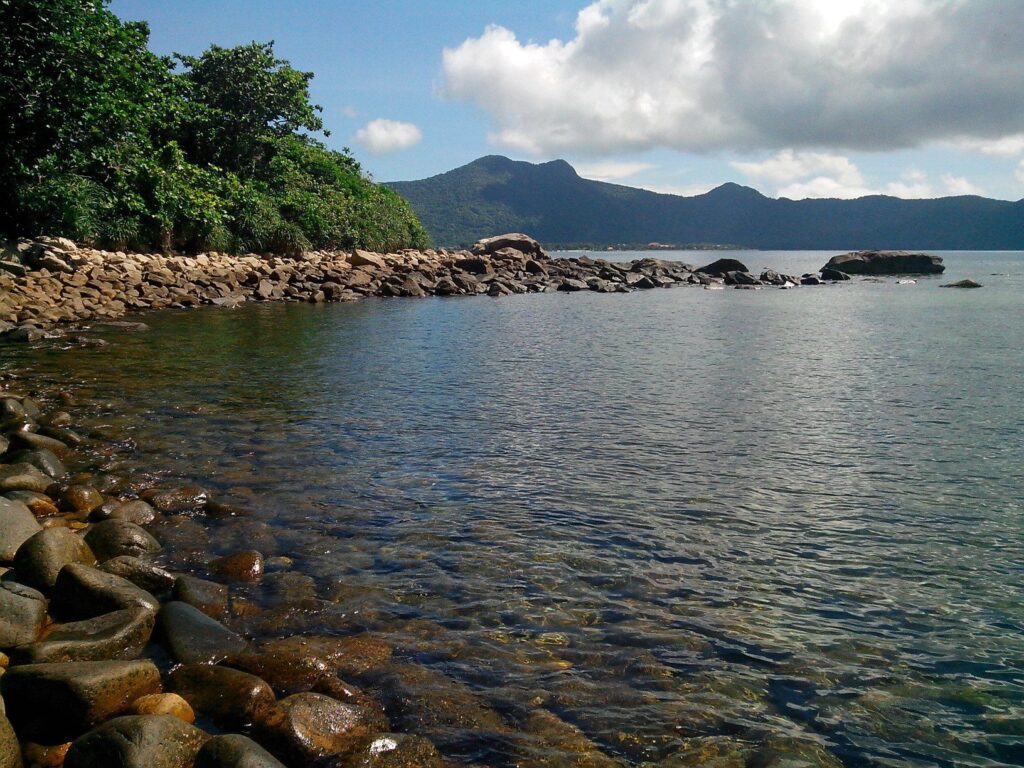Côn Đảo is one of Vietnam’s outpost archipelagos, located to the southeast of the nation. For 113 years (1862–1975), Côn Đảo was infamous as a “Hell on Earth.” Under French colonial rule and later American imperial rule, the island became a place of incarceration and brutal torture for Vietnamese revolutionaries and patriotic citizens. Tens of thousands of the country’s finest sons and daughters perished here—among them, many heroes from Bến Tre Province.
Countless Revolutionaries Imprisoned
As part of the thematic exhibition “Côn Đảo – A Cultural and Tourist Destination” commemorating the 75th Vietnam Cultural Heritage Day (23 November 1945 – 23 November 2020), more than 200 archival photos of Côn Đảo are being displayed at the Bến Tre Museum. Many images and documents honor Bến Tre revolutionaries imprisoned on the island.
Among them is Nguyễn Văn Bích (native of Ba Tri District), husband of the legendary heroine Nguyễn Thị Định. During the 1940 resistance movement, he served in the Bến Tre Provincial Party Committee and mainly operated in Lương Hòa Commune, where he met Nguyễn Thị Định and introduced her to revolutionary activities. During a mission in the field, he was arrested and deported to Côn Đảo Prison. Enduring harsh prison conditions, he became gravely ill and passed away on 24 July 1942. His grave is located in Zone A of the Hàng Dương Cemetery.
The American Tiger Cages
Another exemplary figure from Bến Tre is Võ Ái Dân (alias Mười), from Mỹ Hưng Commune, Thạnh Phú District. He later served as Director of the Southern Affairs Department of the Office of the National Assembly. During his revolutionary activities, he was arrested by the Republic of Vietnam government and imprisoned on Côn Đảo from 1964 to 1975. He now resides in Ho Chi Minh City.
Phạm Khải Hoàn (prison name: Lê Văn Diệp), also from Mỹ Hưng Commune, was formerly Vice Chairman of the Fatherland Front Committee of Bến Tre Province. He was arrested and imprisoned on Côn Đảo between 1968 and 1969.
Many other Bến Tre revolutionaries also endured imprisonment on the island, including:
Đặng Quốc Tuấn (Sáu Tuấn), from Mỹ Thạnh Commune, Giồng Trôm District, former Director of Bến Tre Radio and Television Station. He was arrested and exiled to Côn Đảo in June 1962.
Trịnh Thị Thu Nga (alias Út Huyền), from Mỏ Cày District. She later became Director of Ho Chi Minh City Social Security. During the war, she worked as an intelligence officer inside the Republic of Vietnam’s parliamentary offices. She was arrested and imprisoned on Côn Đảo twice.
Trịnh Hoàng Hoanh (prison name: Cao Văn Xuân), from Tân Thủy Commune, Ba Tri District—one of the longest-incarcerated prisoners on the island, detained from 1960 to 1975.
Carrying Forward the Tradition
At a gathering held in celebration of Vietnam Cultural Heritage Day, Lê Văn Thức, a former political prisoner of Côn Đảo, shared emotional memories of his unforgettable years in the “Hell on Earth.” Born in 1941 in Tân Thạch Commune, Châu Thành District, he worked as an intelligence liaison within the enemy’s ranks. In 1968, he was arrested by the Republic of Vietnam authorities and imprisoned on Côn Đảo until liberation on 30 April 1975.
He recalled:
“I was part of the intelligence and security network of Zone 8. I was embedded within the enemy’s officer corps to gather intelligence for our revolution. During operations, I supplied information and drew maps of enemy targets. Once discovered, I was arrested, sentenced to death, and exiled to Côn Đảo (late 1968), where I remained for seven long years. I was transferred from one camp to another, shackled, isolated, and tortured. But my will was strengthened by the revolutionary organization inside the prison. No matter how harsh the conditions, we revolutionaries remained firm in spirit and ideology.”
According to Mr. Thức, his generation lived and sacrificed wholeheartedly for the revolution and the nation. Today’s youth must inherit that spirit—though in a different context—by protecting the country, contributing to development, and nurturing political integrity, unity, and trust in the Party’s leadership.
Another former political prisoner, Trần Văn Bộ (also known as Trần Văn Nhiệm, Ba Nhiệm), also shared his reflections on those harsh years and expressed pride in the development of his homeland. Born in 1936 in Tân Thanh Commune, Giồng Trôm District, he was arrested during the student movement in Saigon and exiled to Côn Đảo. Although sentenced to indefinite detention in May 1965, he successfully escaped in March 1967 and returned to the mainland.
He stated:
“After liberation, Bến Tre worked tirelessly to overcome the devastation of war, gradually moving forward. This progress reflects the tremendous efforts of provincial leaders and the people of Bến Tre. We must continue striving to build a stronger, more prosperous, and more civilized province.”
A Lasting Legacy
The stories of Bến Tre’s former political prisoners on Côn Đảo illuminate a shining revolutionary spirit for future generations to follow. In 2012, Côn Đảo Prison, located in Côn Đảo District, Bà Rịa–Vũng Tàu Province, was recognized by the Ministry of Culture, Sports and Tourism as a Special National Relic. Today, the site attracts numerous visitors who come to learn about history and pay respects at the resting places of Vietnam’s revolutionary heroes.








